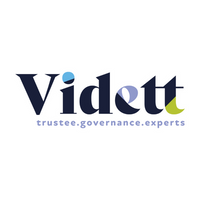Five key considerations when selecting a master trust pension scheme

As it is a ‘must have’ rather than a consideration, I’m going to state the obvious up front. Choose one that’s authorised by The Pensions Regulator (TPR). There’s a list of them on the TPR website. At the time of writing, the DC master trust authorisation process is still in progress, so you can consider master trusts awaiting authorisation on the presumption they will pass the TPR tests.
Here are the five key considerations we use when helping clients select a DC master trust. They’re in no particular order, as the relative importance will depend on your scheme, members and circumstances. Always remember to consider different perspectives though – An Aon Hewitt poll of pension managers, trustees and employers in 2017 suggested professional governance is the most important aspect making master trusts attractive, whilst BlackRock research showed pension members wanted employers to focus on investment returns when selecting a master trust.
1. Investment choice and pension flexibility
Default fund make up is critical to help members who don’t engage with their pension scheme achieve the best outcomes, but it’s wider than that. The master trust’s investment strategy is important. You need to consider investment performance and you’ll want a suitable fund range for your members – default and self-select, active and passive management, environmental, social and governance (ESG) ‘friendly’ funds and Shariah funds.
You need to consider at/post-retirement options too (horribly termed ‘decumulation’ in the industry). You’ll probably want these to be flexible and offered through the master trust – examples include the ability to take some cash and leave the rest for later and flexi access drawdown.
2. Quality of governance
In choosing to use a master trust, you’re passing responsibility to someone else. You and your pension scheme members will want to be certain everything is safe, secure and well run. As such, you should ask:
- Who owns the master trust? What is their financial security like and what are their future plans?
- What about the experience and independence of the trustees? High quality, best practice governance arrangements and confidence in the oversight of operational delivery are likely to be high up a list of requirements.
3. Quality of communications
Consider both member communications and performance reporting back to the employer. We all know the importance of clear, fresh, engaging communications that are delivered using a variety of methods suitable to you and your members.
- Does the master trust offer guidance and education tools for members before, at and after retirement?
- Will routine communications and online tools help you and your members easily stay up to date, see how their pension is progressing and implement changes like a fund switch?
- Does the strategy include more tailored communications, such as nudges, and make it easy for a member to take action directly off the back of the message?
4. Price
The price needs to incorporate all costs and charges before, at and after retirement. In addition to fund annual management charges (AMCs) and total expense ratios (TERs), there could be contribution allocation charges, costs for accessing drawdown and taking a variable income. Some master trusts offer members access to an independent financial adviser (IFA) at discounted rates.
What’s key is to consider value for members. Cheapest isn’t necessarily the best. Which will help give members the best outcome – a cheap scheme with minimal fund options, lower governance standards and basic communications or a more expensive one with a wider fund range, a well thought through communications strategy and effective independent trustee-led governance?
5. Administration
This is an important part of the quality of service members receive. It’s also a big part of operational delivery from the sponsor’s perspective.
- Who delivers the administration service? How many master trusts do they work with? Do they have a specialist master trust administration team?
- What is their service like? What are their target service levels? Are they meeting them?
- How regular and clear is reporting – both for the trustees (to give you confidence in oversight) and for you as an employer?
There’s definitely plenty to think about. You are, after all, trying to select a single pension service provider – administration, investment, communications, independent trustee and governance specialist – all at the same time. It’s perfectly achievable if you have clear objectives and requirements, and remain focused on these. Of course, you can get external help with your selection if you do find it a little overwhelming!
The author is Clare Owen, director of outsourced pension services at Punter Southall Governance Services.
This article is provided by Punter Southall Governance Services.
Supplied by REBA Associate Member, Vidett
Leading the way in professional trusteeship & governance







